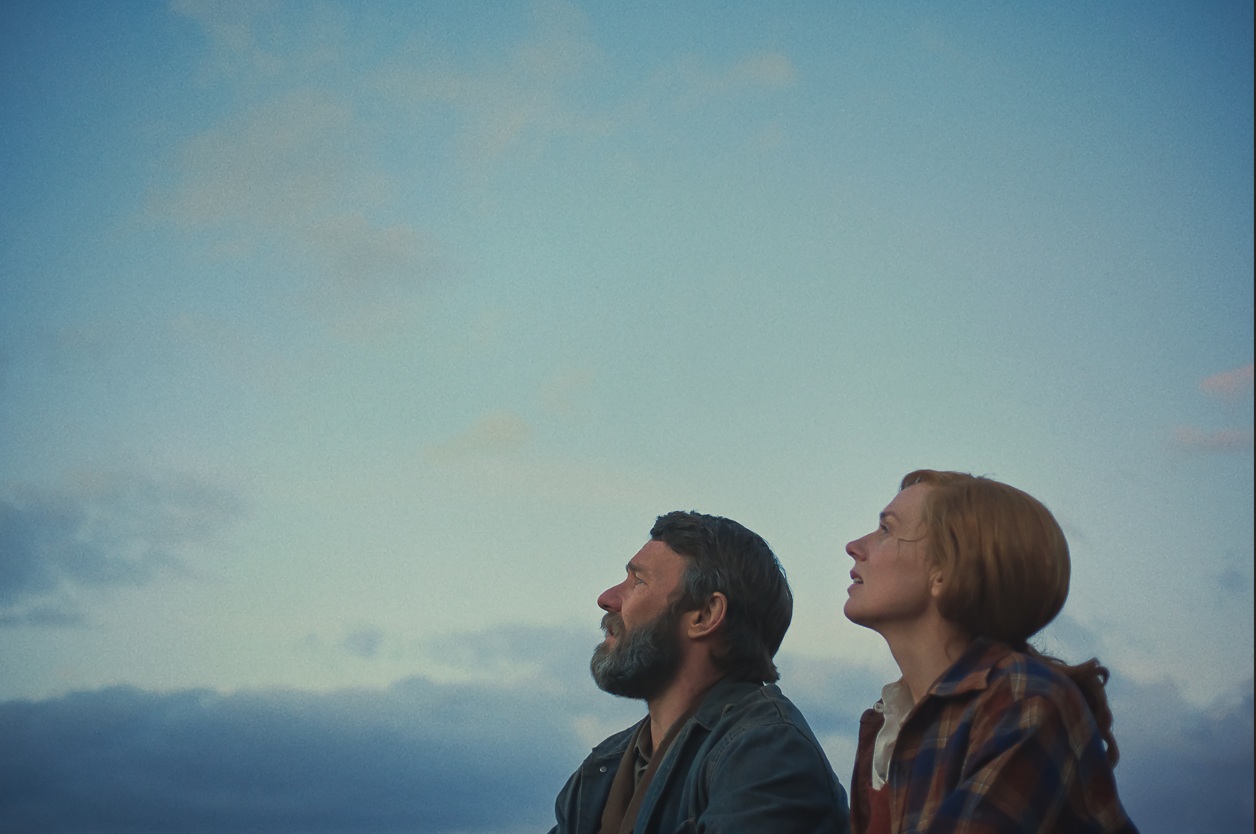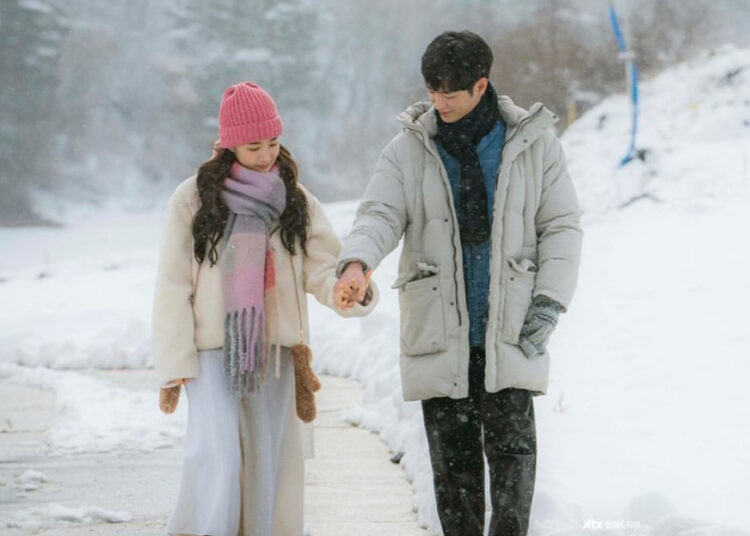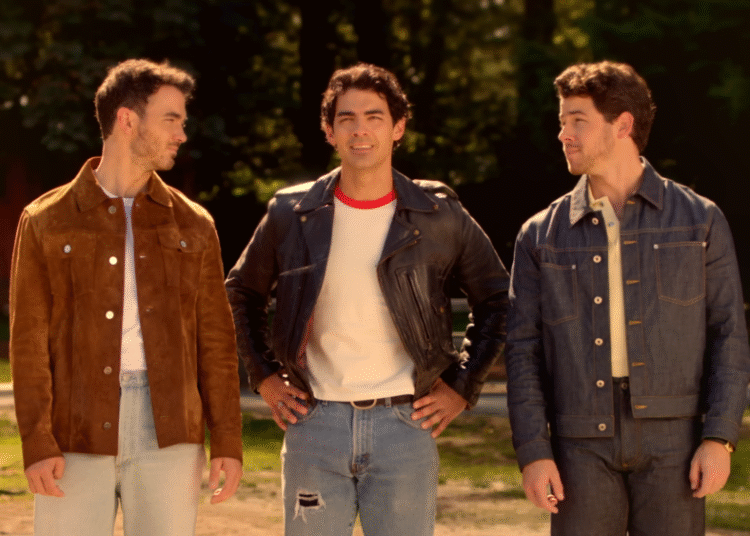Life often leaves us with questions of a fleeting nature… What do we do in the face of impermanence? What is life when measured not in grand moments, but in small, ephemeral acts, in fleeting gestures of love, labour, and memory? “Train Dreams” is one such meditation. It’s a firm draw into a world where the natural rhythms of work, loss, and human striving are inseparable from the untamed landscapes that both sustain and overwhelm us.
Denis Johnson’s novella, published in 2011, serves as the lodestar for Clint Bentley’s adaptation. It provides both narrative structure and an atmospheric blueprint. Often compared to Hemingway for its declarative simplicity and unflinching attention to the rhythms of ordinary life, the prose remains one of deep resonance.

Indeed, Johnson ponders the reckoning of almost imperceptible passages of time. How do we measure the weight of absence, or the quiet persistence of memory? When life is defined less by grand gestures than by the daily, what does it mean to truly inhabit the world?
The film itself opens with a forest bathed in light, immediately asserting its preoccupation with the interplay between life and transience. A tree falls, and through a point-of-view shot, we plummet with it. We feel the raw force of gravity and the fragile nature of existence itself.

We then transition to the human component behind that tree. Robert Grainier (Joel Edgerton), a logger and railroad worker, whose life is a continual cycle of labour, brief reunions, and the relentless pull of responsibility. He marries Gladys (Felicity Jones), and for a time, life appears manageable, punctuated by fleeting moments of tenderness with his infant daughter, Kate. Yet we know impermanence lingers on the horizon. Even the most ordinary routines are touched by forces beyond human control.
We flow through Grainier’s work as he repairs the Robinson Gorge Bridge and cuts and transports timber. In these moments, we begin to feel the weight of life as labour and the precariousness of existence on the edges of civilisation. During his brief returns home, conversations with Gladys probe the limits of human understanding and affection. One such moment occurs when Grainier wonders whether his daughter—or even a dog—could perceive his role as a father.

Up until the pivotal summer of 1920, the film unfolds with a quiet, measured rhythm, observing the cyclical nature of Grainier’s work and domestic life, and offering glimpses into the hazards of his profession. Colleagues die in accidents or through revenge-fueled altercations. Indeed, the dangers of the frontier world he inhabits are always immediate and unflinching.
One of the most poignant sequences introduces Arn Peeples (William H. Macy), a fearless yet superstitious old man whose cavalier approach to explosives foreshadows the impermanence of life on the frontier. Sure, he gets made fun of; he goes through multiple instances when his plan fails, and he attempts to fix the problems. The cruel irony is that he never perishes from explosives. Instead, it’s a falling branch that underscores the arbitrary cruelty of the natural and human world alike.

It is upon Grainier’s return to Idaho that the film’s emotional stakes fully crystallise. A massive wildfire has consumed the valley; his cabin has vanished, and with it, all certainty about his family. Gladys and Kate are gone, leaving only a profound absence that saturates the film’s visual and emotional landscape.
Bentley’s direction here is deliberate, refusing sensationalism, instead privileging the lingering, almost unbearable weight of grief. He does not rush the actors and allows the silence of Edgerton’s performance to fill the air. He confronts the empty, ashen remains of his once-standing cabin. It is in this absence that the film’s philosophical undercurrent becomes most palpable. It asks us not only how one survives, but also how one inhabits the world once that which once anchored it has disappeared.

Joel Edgerton delivers a quietly commanding performance as Robert Grainier. He imbues the character with understated resilience and deep, often wordless reflection. His portrayal avoids overt sentimentality. Instead, it captures the slow accumulation of grief, longing, and weary endurance that defines a life lived on the edges of civilisation. Edgerton’s posture, gestures, and the way he navigates the forest and the cabin convey volumes about Grainier’s inner world. These moments are often powerful precisely because dialogue is minimal or absent.
Beyond the narrative, “Train Dreams” is visually sumptuous, a triumph owed in no small part to cinematographer Adolpho Veloso. His work is astonishing. Frames are infused with a tri-layer of colours, capturing both the verdant expanses of the forest and the muted melancholy of desolate landscapes. The constant magic-hour glow lends the film a dreamlike quality, evoking the finality and fragility of Eden itself. Additionally, his 4:3 framing enhances the intimacy of these spaces.

Whether in the sweep of a valley, the verticality of a falling tree, or the quiet interior of Grainier’s cabin, Veloso’s camera observes with painterly rigour. It finds poetry in the quotidian and drama in the silence. His images communicate as much, if not more, than the sparse narration, which often steps in to guide us through the protagonist’s life.
Bentley’s sensibilities, evident from his earlier work in “Jockey”, shine through in “Train Dreams”. Bentley has an eye for human minuteness set against the grandeur of the environment. He leverages that skill here to underscore Grainier’s vulnerability, perseverance, and gradual alienation. There is a reverence for human labour, a subtle yet insistent attention to gesture and rhythm, and a patient cultivation of silence that allows the viewer to inhabit the narrative. “Train Dreams” expands upon his innate senses to the vast, often overwhelming expanse of nature.

Yet while the film’s aesthetic and philosophical ambitions are considerable, it is not without imperfections. The narration, while clearly drawn from Denis Johnson’s lyrical prose, occasionally undercuts the power of the imagery. At times, it over-explains where silence and lingering might have sufficed. There are stretches where the ultra-minimalism borders on inertness, moments that feel slightly out of reach rather than transcendent.
The true emotional heights, as witnessed in the film’s final ten minutes, arrive late. It leaves a sense that the narrative might have benefited from a more gradual unfolding of its climactic revelations. Nevertheless, these critiques do not diminish the film’s overarching achievements. Bentley’s patience, Veloso’s cinematography, and the philosophical resonance of the story collectively render “Train Dreams” a work of striking contemplative power.

The film’s approach to grief, mortality, and the ephemeral nature of connection is reinforced through its attention to ordinary gestures and quiet observation. Conversations with Kerry Condon’s character, small chores, and the simple routines of labour provide a counterpoint. They stand against the vast and indifferent wilderness that surrounds them.
Grainier forms brief bonds with a dog, watches a bear wander past his ruined cabin, and glimpses the ghostly figure of his wife. These are moments that reveal both humanity’s longing for connection and the impossibility of reclaiming what we have lost. Adolpho Veloso’s exquisite cinematography frames these sequences, immersing us in a world where life unfolds not through grand events but through the gradual accumulation of small, poignant moments.

Ultimately, “Train Dreams” is a film that demands patience, reflection, and an openness to ambiguity. It asks its audience to be in the moment. It requests to linger in the spaces between loss and a sleeping, fleeting beauty. Bentley’s careful construction of rhythm and mood creates an experience that is at once intimate and expansive. Combined with Veloso’s extraordinary visual palette, it resonates long after the screen fades to black.
The film may not entirely escape the shadow of other meditative explorations of grief and mortality. Yet the film distinguishes itself by quietly insisting on the poetry of ordinary life. It emphasises the weight of memory and the inevitable passage of time. In doing so, it affirms that life, while transient and often ungraspable, leaves traces that persist. These traces reverberate like echoes through the wilderness we inhabit.

In the end, “Train Dreams” is a film of rare visual and philosophical ambition. It is, at times, quietly heartbreaking, frequently luminous, and always contemplative. For those willing to immerse themselves in its rhythms and silences, the film offers a meditation on the fleeting nature of life. It’s both elegant and profoundly human, and one that lingers long after the credits roll.

“Train Dreams” is now streaming exclusively on Netflix.
The Review
"Train Dreams"
Review Breakdown
- Great












